| Those Milneburg Joys |
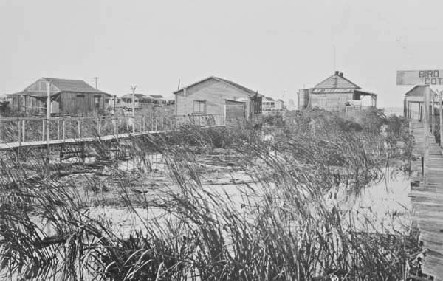
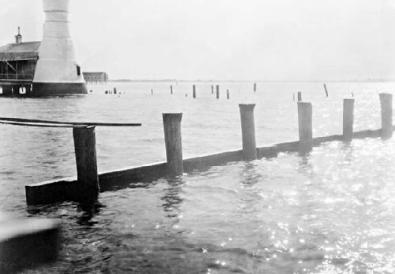
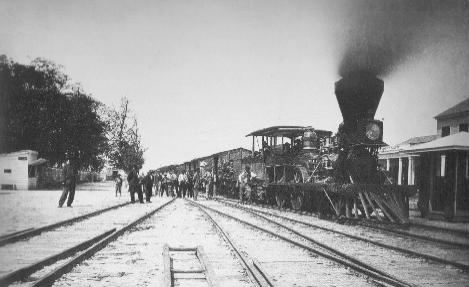
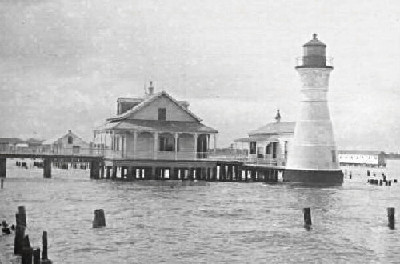
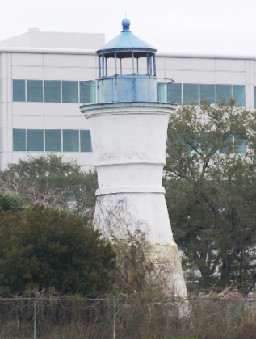
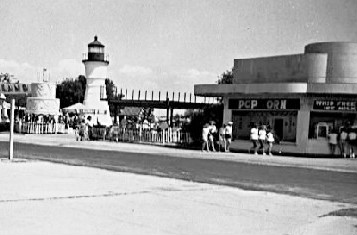
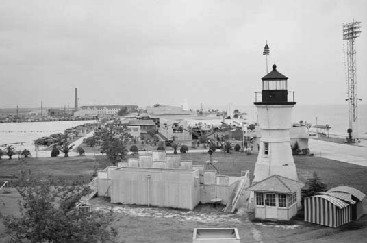
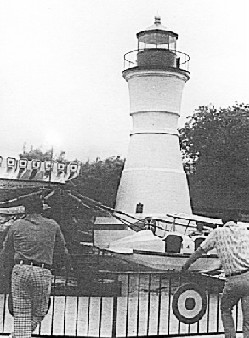
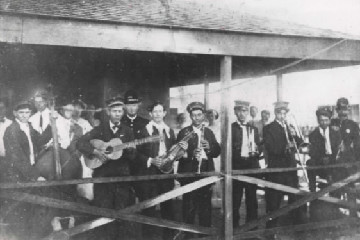
| Famous for the part it played in nurturing New Orleans jazz, Milneburg was a settlement on the shore of Lake Pontchartrain situated where present-day Elysian Fields Avenue ends. The community was eventually annexed into the city of New Orleans. It had been given the name of "Port Pontchartrain" in the 1700's, but the Milneburg name soon replaced it. The only thing that survived of the original name was the lighthouse, which the Coast Guard continued to list as "Port Pontchartrain Lighthouse" until it was deactivated in the 1920's. Milneburg was named for Scottish-born Alexander Milne, who developed the land in that area. Locals began calling it "Millenburg," so, if you go searching for a rendition of jazz great Jelly Roll Morton's famous old "Milneburg Joys" song, you might have better luck looking for "Millenburg Joys." Milneburg was a popular lake resort community for over 100 years and, for some time, an important shipping destination, as well. In 1830, a railroad was built to connect New Orleans to the lakefront at Milneburg. The Pontchartrain Railroad was one of the first railroads in the country - only 23 miles of track had been laid in the United States when work began on the Pontchartrain line. It was constructed over miles of swampland that, until then, had been thought impassable. The work was extremely hard and the mortality rate for the workers was high, especially during outbreaks of yellow fever. The track was finally completed at a cost of hundreds of lives and an astounding price of $300,000. |
| Camps at Milneburg, 1923 |
| By 1840, the railroad company had opened two hotels and two bathhouses in Milneburg. A trip on the train, pulled by a boisterous steam engine locals dubbed "Smoky Mary," was described by a visitor in the 1930's: "A mile from the city, we had left the city and all dwellings behind us and were flying through the fenceless, uninhabited marshes. At the lake, a quiet village of handsome hotels, cafes, dwellings, storehouses and bathing rooms burst at once upon our view. A village has grown up around the terminus, all the names of the owners, the notices and signboards being French." In 1890, the Pontchartrain Railroad was absorbed into the Louisville & Nashville Railroad. They continued to carry passengers to the lake until 1932, but, by then, Milneburg's glory years were beind her. In the 1930's, a massive land reclamation was undertaken at the lakefront and the houses, businesses and camps at Milneburg were all demolished to make way for subdivisions, Lakeshore Drive and the seawall. Pontchartrain Beach amusement park took up a portion of what had been the community of Milneburg - the old lighthouse ending up on dry land in the middle of the park, a well-known meeting place for Beach visitors. Eventually, the park closed and the campus of the University of New Orleans took over the area that had once been Milneburg. |
| "Smoky Mary" at the station in Milneburg, 1860's. |
| From the 1830's to the 1930's, Milneburg was a popular place for dances and parties every weekend during New Orleans' long hot summers. Local musicians played everywhere - at private parties, clubs, cafes and saloons. Many of the musicians who played there in the early 1900's went on to become world famous as the early pioneers of jazz. Milneburg was a place where musicians of all races and cultures could gather to listen to each other and informally jam, so it was important in the development of New Orleans-style jazz. The only remaining relic of Milneburg is the lighthouse, landlocked and in badly deteriorating condition, but still standing, surrounded on all sides by the sprawling campus of the University of New Orleans. If you happen to be in the area on a hot summer night, if you're in the right frame of mind, you might be able to catch the sound of long-ago music, carried past the lighthouse by a soft lake breeze. Who knows, maybe even the voice of Jelly Roll himself . . . . Rock my soul with the Milneburg joys, Rock my soul with the Milneburg joys, Play'em, Mama, don't refuse, Separate me from these weary blues, All night long, with that dixieland strain, Play it down, then do it again, Ev'ry time I hear that tune, Luck says I'll be with you soon, That's why I've got those Milneburg joys. -- Nancy |
| Frank Christen's Band at Quarella's Pier, Milneburg, 1905. |
| Above & below, at the start of the land reclamation project, as the houses and camps - sitting both on land and over water - were beginning to be demolished. The old lighthouse is still in the lake at this time; 1930's. |
| Above, the Port Pontchartrain Lighthouse now rests on dry land, while the amusement park is constructed around it. Below, left, the lighthouse stands at the entrance to Kiddieland on the park's midway, 1950's; right, it's deserted, after the park closed, 1980's. |
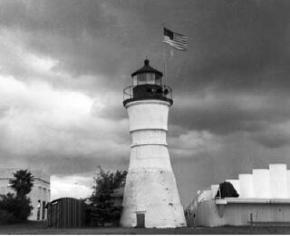
| Left, the lighthouse, 1970; right, a current photo of the lighthouse, abandoned and in need of repair. |
| The link to this page is: http:old-new-orleans.com/NO_Milneburg.html Back to New Orleans and the Birth of Jazz Back to Old New Orleans Index Whispers - Home |
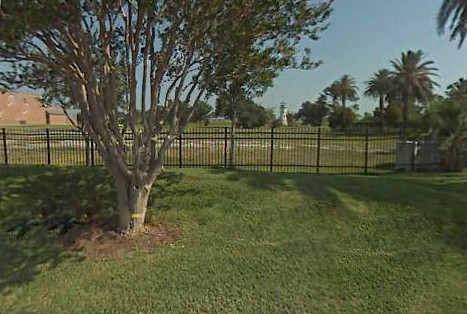
| Although the University of New Orleans campus surrounds it, the historic old lighthouse stands, for all intents and purposes, alone. |
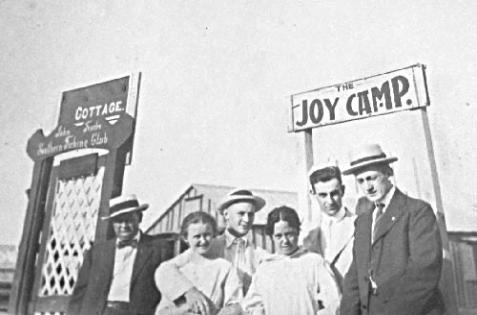
| This photo, taken at a camp at Milneberg in 1915, was in an old scrapbook. The description on back reads: "Left to right: Mr. Fisk, Eva Fisk, E. C. Lutz, Julia Vigneau, E. F. Poston, W. H. Smith -- on the wharf, Milneberg, July 15, 1915." |